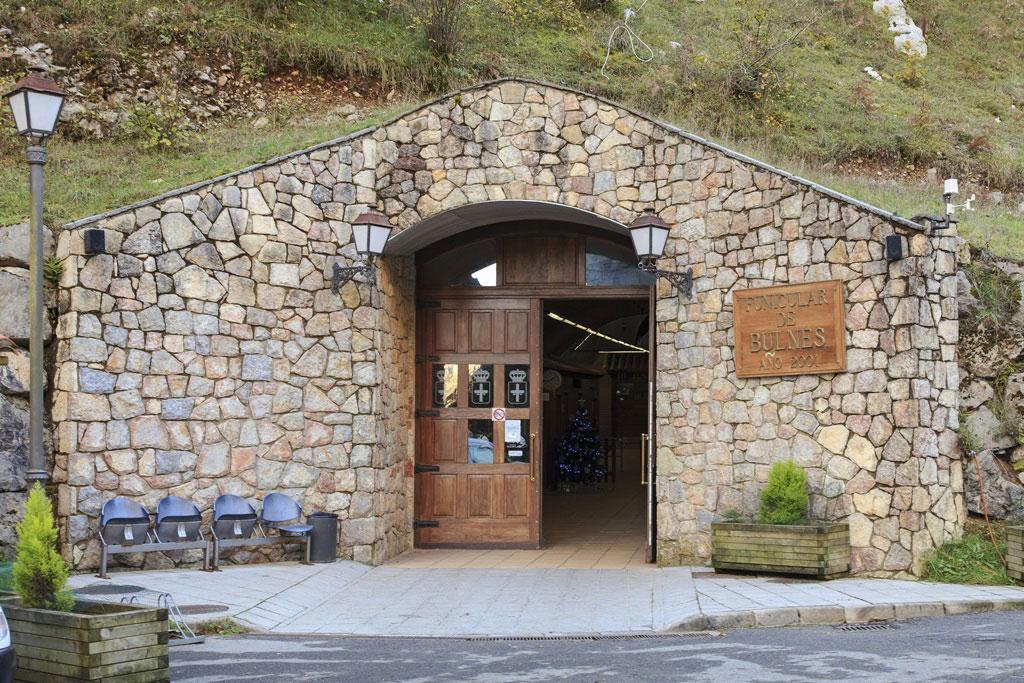PICOS DE EUROPA
The Picos de Europa National Park covers the south-western area of Asturias, separating it from the neighbour regions of León and Cantabria. It was the first National Park of Spain, and it was declared a Biosphere Reserve in 2003 by the UNESCO.
It crosses the municipalities of Amieva, Cangas de Onis, Onis, Cabrales, Peñamellera Alta and Peñamellera Baja . Its limits are marked by the river Sella on the west, and the river Deva on the East, with a total extension of 550 square kilometres only in Asturias. The highest point in the park is at more than 2600 meters high.
Here you can find some of the best sightseeing in Asturias, including the Pico Urriellu, the Sanctuary of Covadonga, the Lakes of Covadonga or the Cares Gorge.
Historically, Picos de Europa is one of the most important sites in Spain, as it was here where the “Reconquista” began with King Pelayo of Asturias and the Battle of Covadonga.
The Park is populated by many species of wildlife, such as the Western Capercaillie, the Iberian Wolf, the Cantabrian Brown Bear, the Cantabrian Chamois or the Spanish Ibex. All these species can be roaming the oak and beech forests and mountains that cover most of the territory of the park. There are also different species of trout and salmons in the different rivers that cross the Park. Picos de Europa has a representation of most of the wildlife present in Spain.
The geography of the park is very influenced by glacier modifications, giving the land its shape, divided in three different massifs separated by rivers that formed those glaciers: the rivers Sella, Cares, Duje and Deva.
There are plenty of wonderful places to visit in the National Park. The Marian shrine in Covadonga, where the “Santina” rests in her sanctuary carved in the mountain stone by a natural waterfall, is one of the most visited places in Asturias, and it is considered the “cradle” of the Reconquista, as the myth says that in that cave the Virgin Mary visited Pelayo and gave him the wooden cross that would lead him to defeat the Moors.
The Lakes Enol and Ercina in the mountains near Covadonga are another point of interest. The ascent to the lakes is made by mountain road that provides some of the best views of the Picos. The Vuelta A España Cycling Race has this ascent as its most iconic stage, and is present in the Race most of the years.
La Loja (Peñamellera Baja) is a cave where you can admire cave art made thousands of years ago. These paintings are carvings had been discovered in 1909, and have been studied by experts since then.
The “Interpretation Centre of the Picos de Europa” is located in Cangas de Onís, and will provide tourists with information about the National Park of Picos de Europa.
THE OUTDOOR ACTIVITIES
If you want to enjoy this Natural Paradise doing activities you have a wide variety of things to choose from:
The Cares Route (Cabrales) is a 12 kilometre hiking route carved in the stones of the gorge of the River Cares. Its ease of access makes it perfect for everyone.
The Mythological Route of the Beyu Pen (Amieva) is a route that goes though enchanted forests where you will meet the different characters of Asturian mythology, such as the Diañu Burlón (or “the joker devil”) , Busgosu (“the forest spirit”), or Xana (“the river fairy”), while you enjoy the beautiful scenery.
Picos de Europa is an area internationally known for its perfects sports for rock climbing, having one of the best climbing spots in Europe: the Pico Urriellu.
The rivers that give the Park its shape are perfect to practice canoeing and other activities such as rafting or canyoning. The River Sella hosts one of the most important river descents: the International Descent of the River Sella, which takes place on the first Saturday of August.
The gastronomy of the Picos de Europa is based on the traditional Asturian dishes. You can find stews like Fabada, Pote de Berzas or meat casseroles, natural cider, and, mostly, cheese. This mountain region is well known for the variety of the cheese that is produced, from the Cabrales, to the Gamoneu, both recognised with a PDO by the European Union, but without forgetting the rest of the varieties.
If you want more information contact Where is Asturias at info@whereisasturias.com












